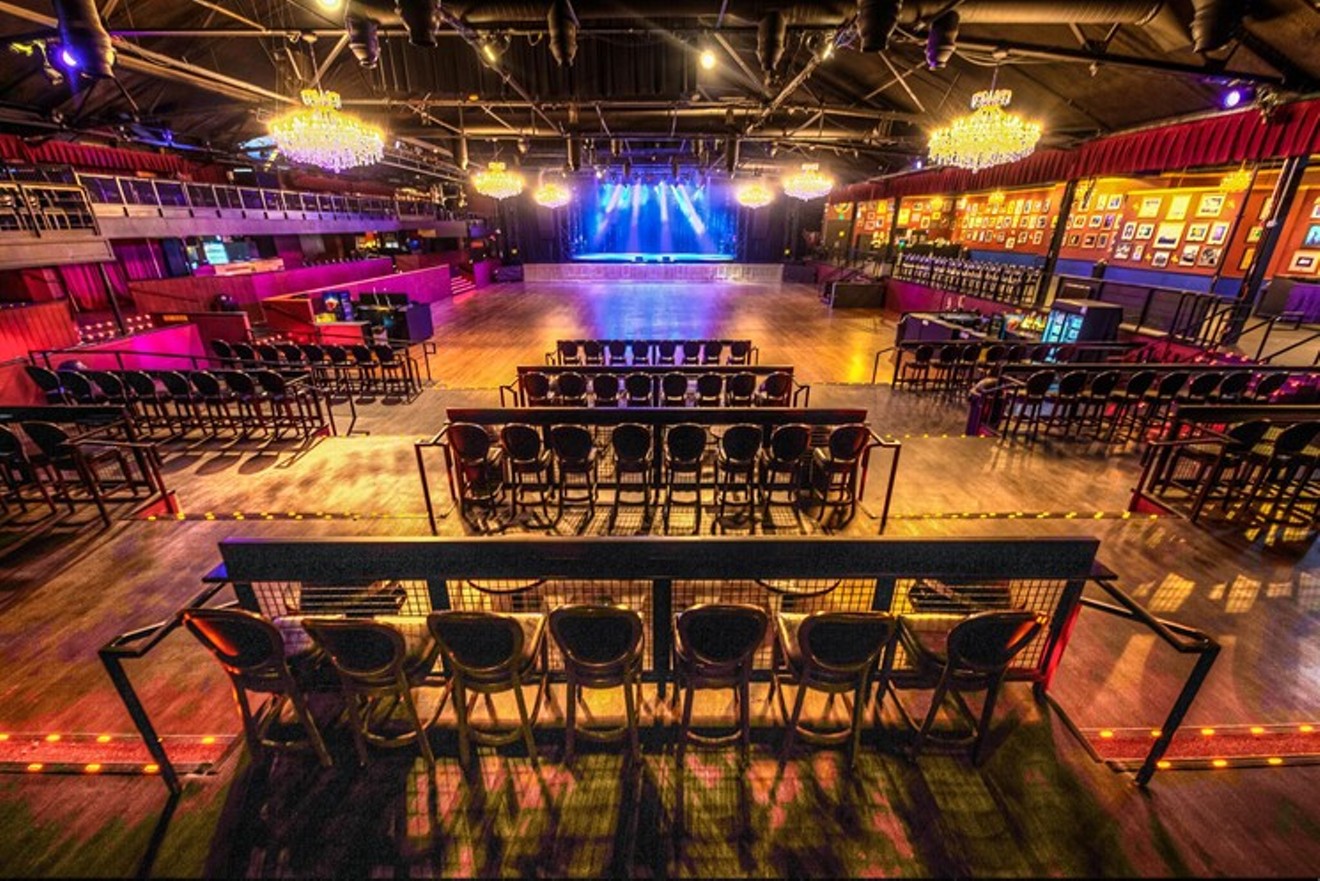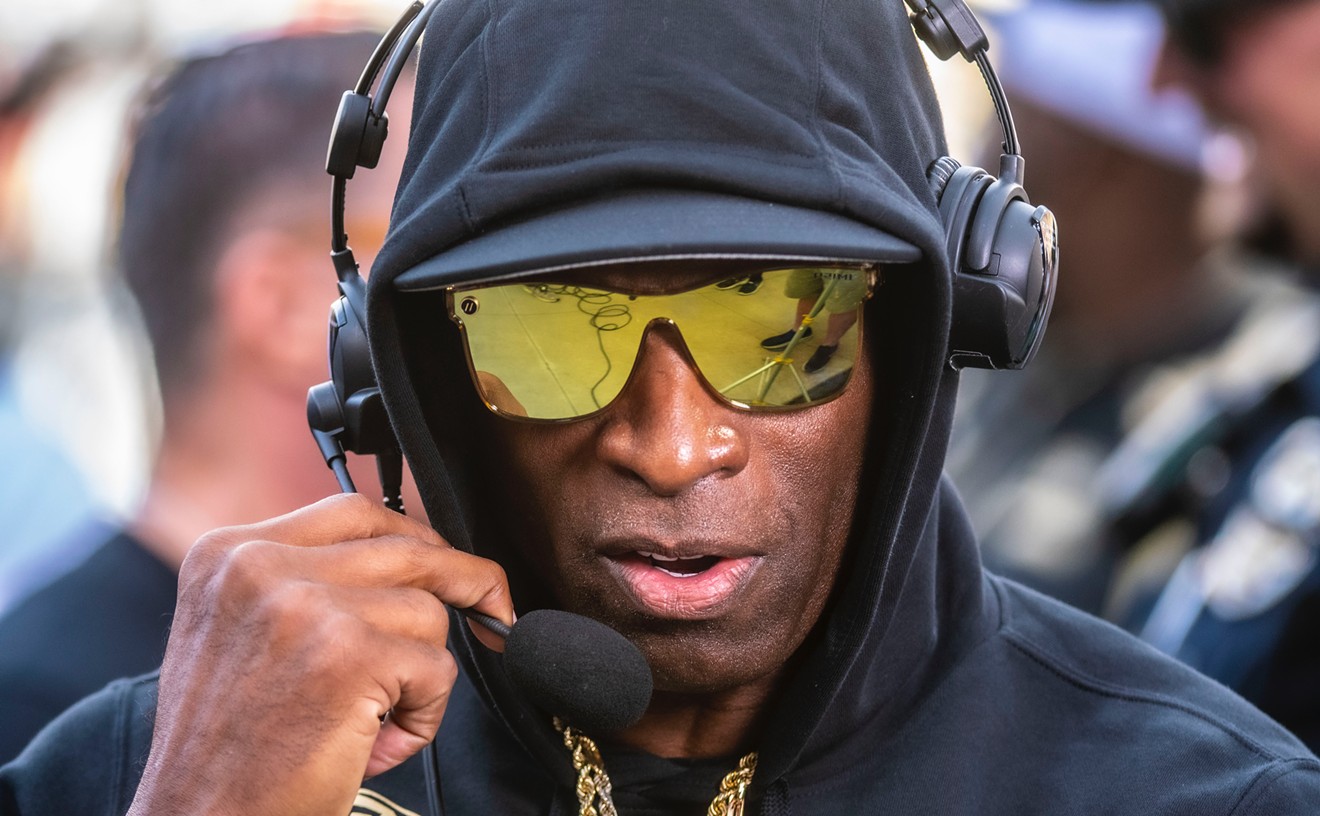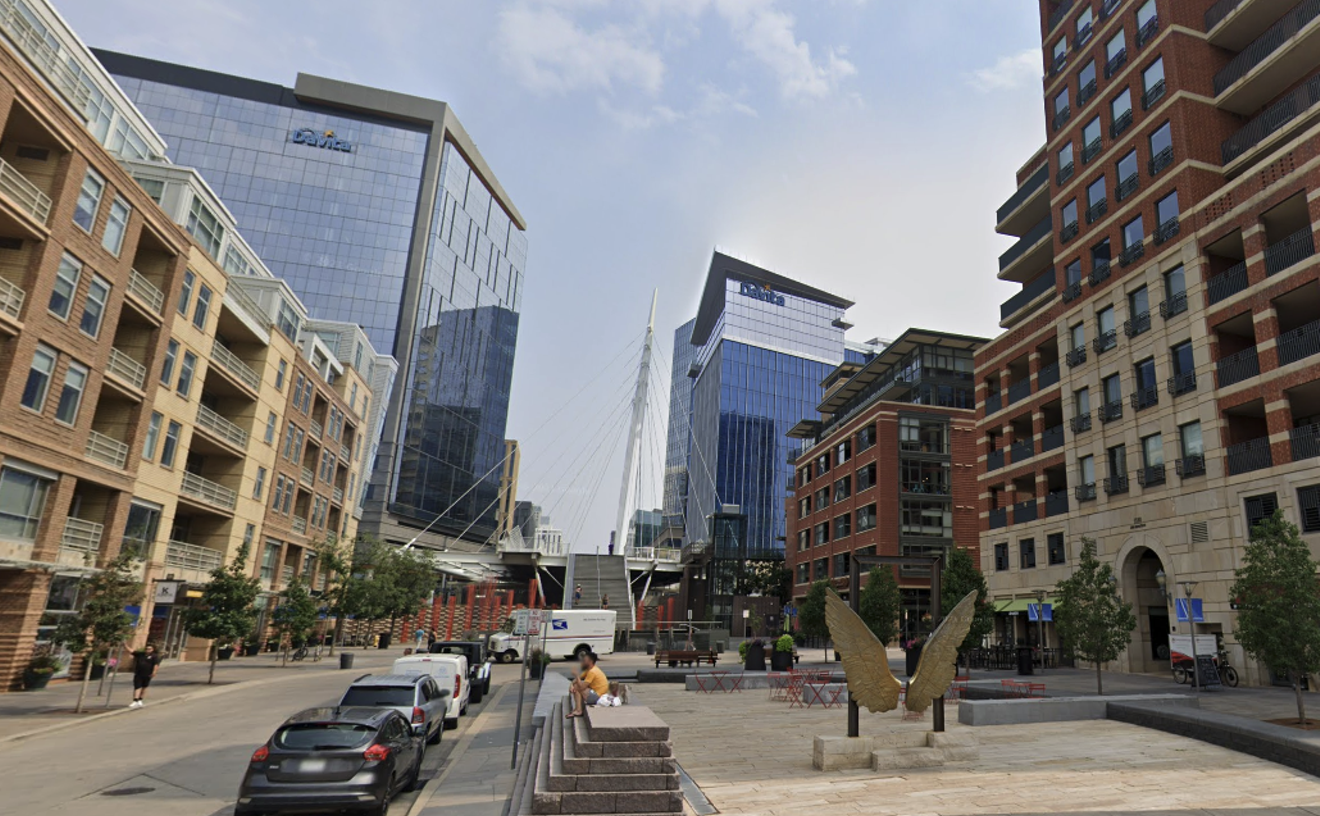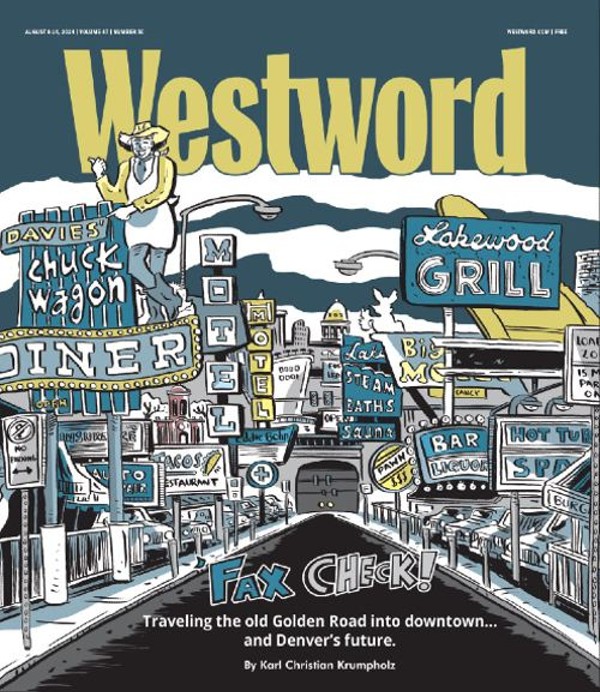At his June 15 press conference focusing on Colorado's COVID-19 response, Governor Jared Polis previewed the Protect Our Neighbors program, the sequel to his current Safer at Home plan, which is expected to go into effect in late June or early July. At that time, municipalities will be able to apply to follow new guidelines that allow for the resumption of many indoor events and outdoor events — under new pandemic-era rules, of course.
Drafts of the proposed regulations are now available for public comment through 5 p.m. June 17 at the Colorado Safer at Home website, and there's a lot of information to digest.
Indoor activities incorporated in the latest guidelines include "receptions, events, concerts, indoor markets, non-critical auctions, theaters, trade shows, or other indoor venues not covered in other guidance documents where these guidelines and adherence to physical distance can be maintained." Outdoor activities focus on "receptions, events, fairs, rodeos, non-critical auctions, concerts, or other outdoor venues not covered in other guidances where these guidelines and adherence to physical distance can be maintained."
To help you navigate the process, we've broken down the drafts for the two event categories:
GUIDANCE FOR INDOOR EVENTS
For venues, capacity guidelines will depend on size. So-called "standard" venues of up to 5,650 square feet will be limited to 25 percent capacity or fifty people, whichever amount is smaller; large venues between 5,650 square feet and 11,300 square feet must stick with 25 percent capacity but can bump up to 75 people if that's the lower number; extra-large venues that exceed 11,300 feet will be allowed to admit 100 people if that amount is below 25 percent capacity.
Here's how the math breaks down: "If in a normal venue, each person needs a three-foot radius around them, or about 28 square feet per person, to achieve six feet in between people, a large venue could provide a six-foot radius around each person, or about 113 square feet per person."
Whatever the venue size, operators must ensure distancing of six feet or more between all employees, customers, contractors and visitors. The same goes for entrance queues, and admission should be paced to prevent congestion, with a one-in, one-out approach to be used once capacity is reached. Staffers should regularly remind patrons to maintain proper distancing, and signage "with easy-to-interpret graphics in commonly used language" should be posted with recommendations about mask-wearing, hand-washing and the like. Single-direction traffic flows in and out of the venue are mandated, and separate entrances and exits are recommended.
Whatever the type of event at the venue, the sharing of tools, equipment and so on should be limited, and catered gatherings won't be allowed to include self-service stations or buffets. Enhanced cleaning and sanitization of "common touch points" such as doors, stairwell handles and light switches, are musts, while ventilation must meet standards from the federal Occupational Safety and Health Administration. Touchless hand sanitization stations should be installed at entrances and high-traffic areas, and plexiglass barriers deployed "where appropriate." Authorities also advise staggering guest arrival and departure times to avoid congestion, and collecting contact information in case COVID-19 tracing becomes necessary.
The rules for organizers and employees are similar to those in place for businesses that reopened under the Safer at Home phase: guidance and encouragement about maintaining six feet of physical distancing; requiring the use of masks and face coverings "wherever possible"; training staffers in the proper use of protective equipment; discouraging face-touching; requiring frequent hand-washing upon arrival, departure and throughout the day; and implementing symptom-monitoring protocols such as workplace temperature monitoring and symptom-screening questions of the sort found on the CDPHE's online symptom tracker.
Workers who've been in close contact with an exposed or symptomatic person — defined as being within six feet for at least ten minutes — are directed to skip work and self-quarantine. If possible, employees should be grouped into teams or shifts to make identifying at-risk folks easier. Remote work should still be encouraged, and participants in events, such as players, performers and actors, should all have their symptoms checked. Anyone meeting the aforementioned close-contact standard with an exposed or symptomatic person is expected to head home and hole up.
Payment methods need to be contactless. Likewise, multiple people shouldn't handle common objects unless they're disinfected between uses, with setup timelines extended to help prevent vendors and other support personnel from overlapping.
For their part, attendees should be encouraged to stay at home if they're sick or exhibiting COVID-19 symptoms. Operators are urged to screen attendees in advance, and if they've been in close contact with a person suspected or confirmed to have COVID-19, they must stay home and self-quarantine. Frequent hand-washing is also encouraged, as is six feet of physical distancing and the use of face coverings — and populations at higher risk should take additional precautions or stay home and participate remotely, if possible.
One more thing: "Attendees should refrain from mixing and mingling with others not in their household during events as much as possible."
If there is a confirmed case of COVID-19 among patrons or employees, event organizers will be required to notify their local public-health agency
GUIDANCE FOR OUTDOOR EVENTS
The difference in the rules governing indoor and outdoor events under Protect Our Neighbors is evident in the capacity limits on venues. Standard venues under 5,650 feet can operate up to 50 percent capacity or fifty people, whichever is fewer, per designated activity. (Fairs or other events that have physically separated spaces or different buildings can have up to the maximum number of attendees in each setting as long as they implement additional prevention measures, such as one-way traffic.) Large venues between 5,650 square feet and 11,300 square feet are allowed 50 percent capacity or 125 people, whichever is fewer; and extra-large venues in excess of 11,300 feet can admit 175 people or go up to 50 percent capacity, whichever is lower.
Other safety protocols are similar for inside and outside events. The latter must create queues at entrances and exits that allow six feet of physical distancing; pace entry and exit; offer reminders about best practices; establish single-direction traffic flows in and out of seating areas; enhance cleaning and sanitization at spots people are most apt to touch; install hand-sanitizing stations at entrances and other congestion points; collect contact information; deploy plexiglass barriers when feasible; and think about staggering arrival times to minimize clogging at entrances and exits.
Standards for organizers and employees at outdoor venues also mirror those for workers at inside joints. They include guidance on maintaining six feet of distancing; requiring mask use; training staffers to properly use protective equipment and keep their hands off their faces; dictating multiple hand-washings; and monitoring symptoms and letting folks know if they're sick or have been in close contact with someone who is. If so, they should head home and self-quarantine.
Rules about contactless payment methods, disinfecting objects between uses and extended setup times are the same for inside and outside venues, as are all the recommendations for attendees — including advice to avoid extended interactions with anyone outside their households. And as with indoor venues, operators of outdoor establishments must notify and cooperate with local public-health officials if there's a confirmed case of COVID-19 among patrons or employees.
According to Polis, permanent rules for indoor and outdoor venues under the Protect Our Neighbors program should be finalized by week's end.

Audio By Carbonatix
[
{
"name": "Air - MediumRectangle - Inline Content - Mobile Display Size",
"component": "12017618",
"insertPoint": "2",
"requiredCountToDisplay": "2",
"watchElement": ".fdn-content-body",
"astAdList": [
{
"adType": "rectangle",
"displayTargets": "mobile"
}
]
},{
"name": "Editor Picks",
"component": "17242653",
"insertPoint": "4",
"requiredCountToDisplay": "1",
"watchElement": ".fdn-content-body",
"astAdList": [
{
"adType": "rectangle",
"displayTargets": "desktop|tablet"
},{
"adType": "rectangle",
"displayTargets": "desktop|tablet|mobile"
}
]
},{
"name": "Inline Links",
"component": "18838239",
"insertPoint": "8th",
"startingPoint": 8,
"requiredCountToDisplay": "7",
"maxInsertions": 25
},{
"name": "Air - MediumRectangle - Combo - Inline Content",
"component": "17261320",
"insertPoint": "8th",
"startingPoint": 8,
"requiredCountToDisplay": "7",
"maxInsertions": 25,
"watchElement": ".fdn-content-body",
"astAdList": [
{
"adType": "rectangle",
"displayTargets": "desktop|tablet"
},{
"adType": "rectangle",
"displayTargets": "desktop|tablet|mobile"
}
]
},{
"name": "Inline Links",
"component": "18838239",
"insertPoint": "8th",
"startingPoint": 12,
"requiredCountToDisplay": "11",
"maxInsertions": 25
},{
"name": "Air - Leaderboard Tower - Combo - Inline Content",
"component": "17261321",
"insertPoint": "8th",
"startingPoint": 12,
"requiredCountToDisplay": "11",
"maxInsertions": 25,
"watchElement": ".fdn-content-body",
"astAdList": [
{
"adType": "leaderboardInlineContent",
"displayTargets": "desktop|tablet"
},{
"adType": "tower",
"displayTargets": "mobile"
}
]
}
]












